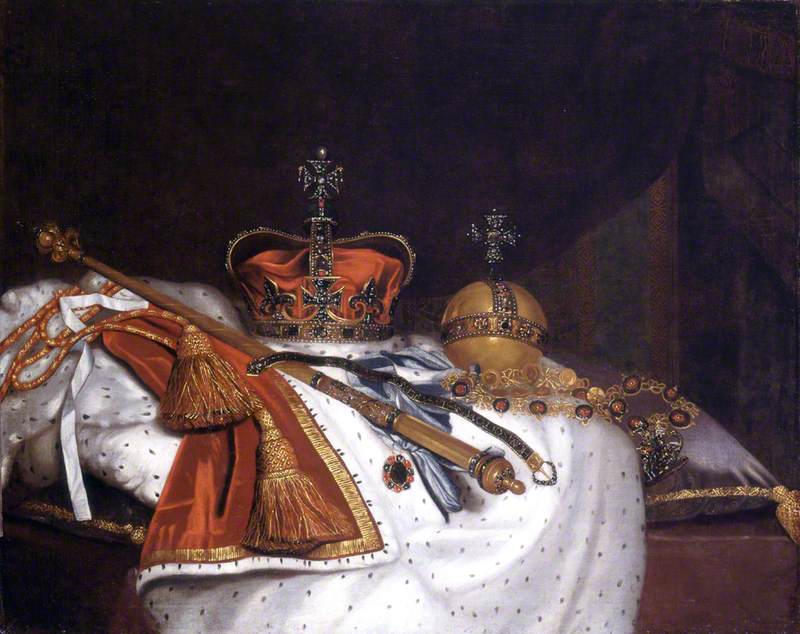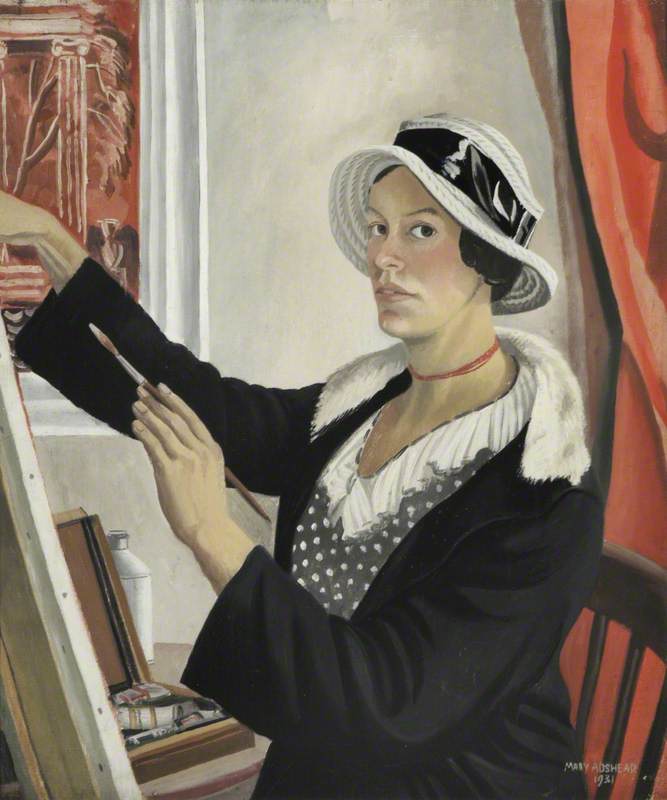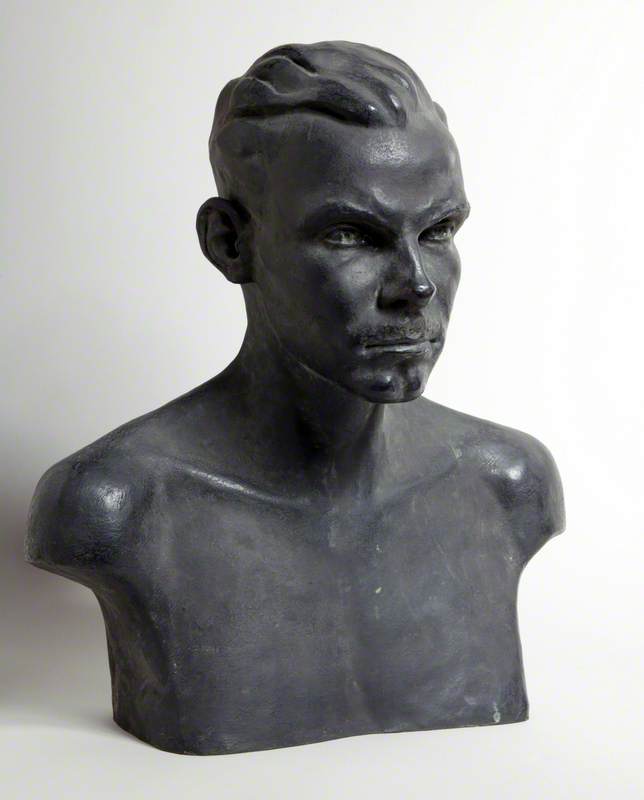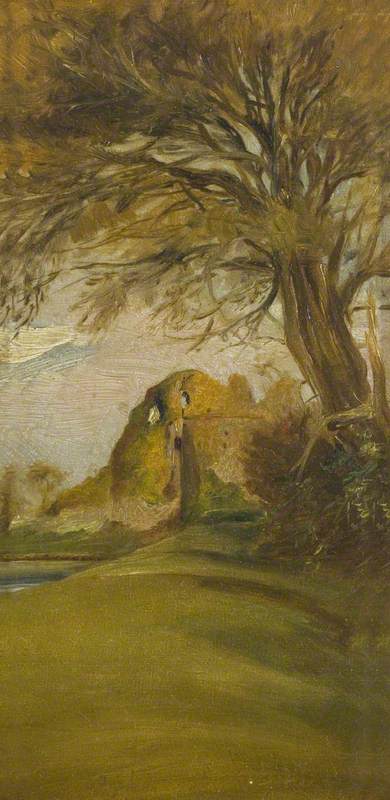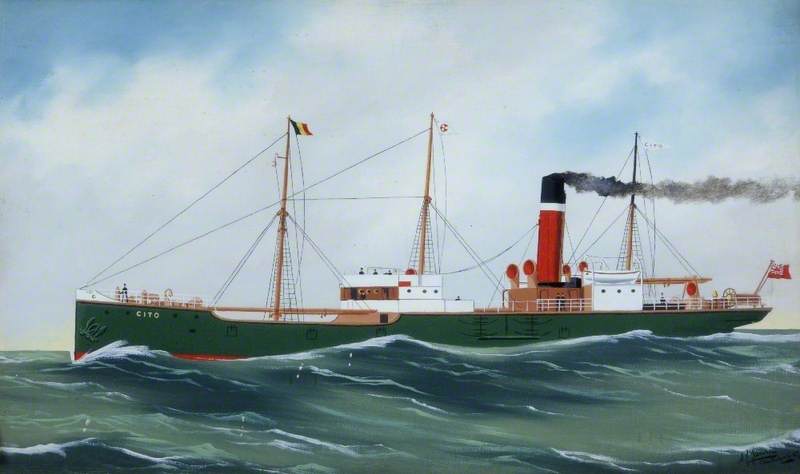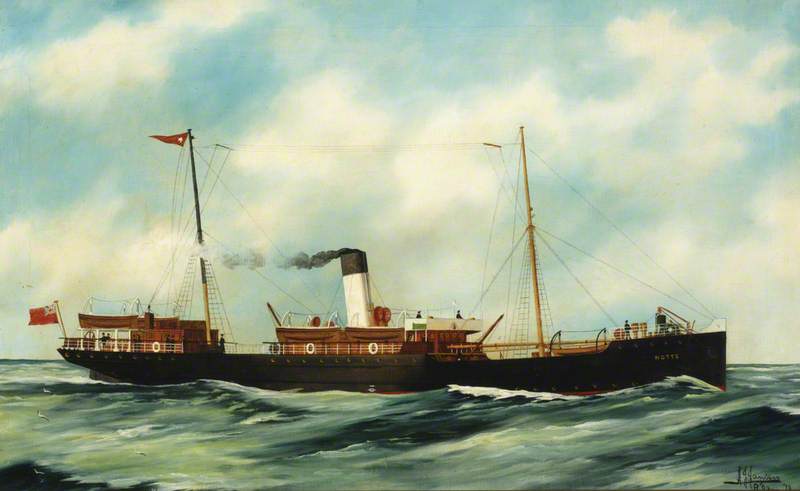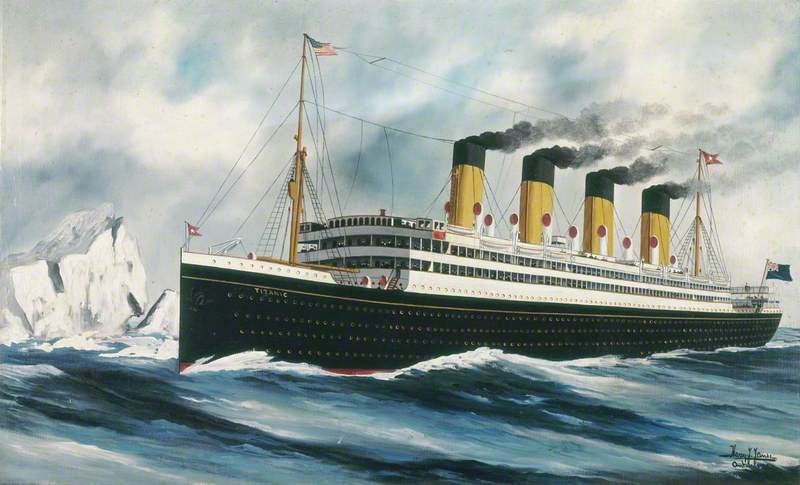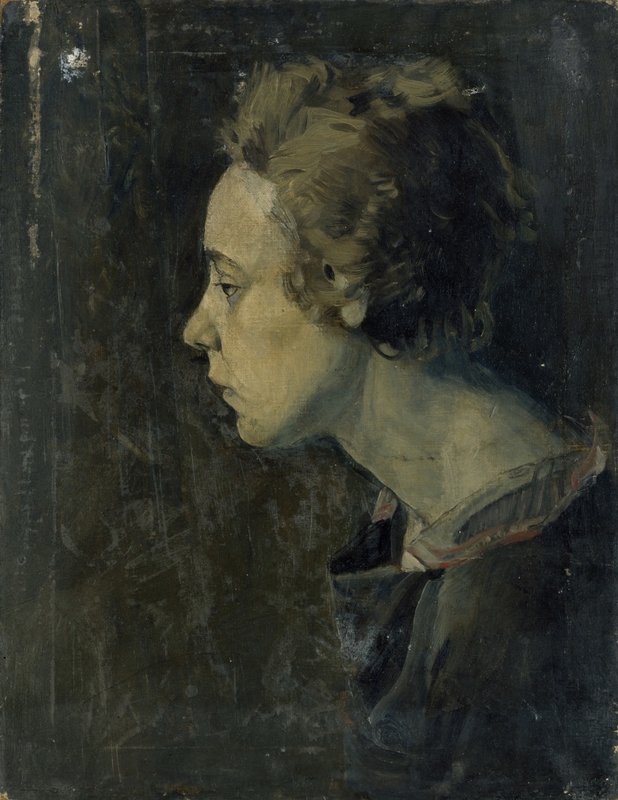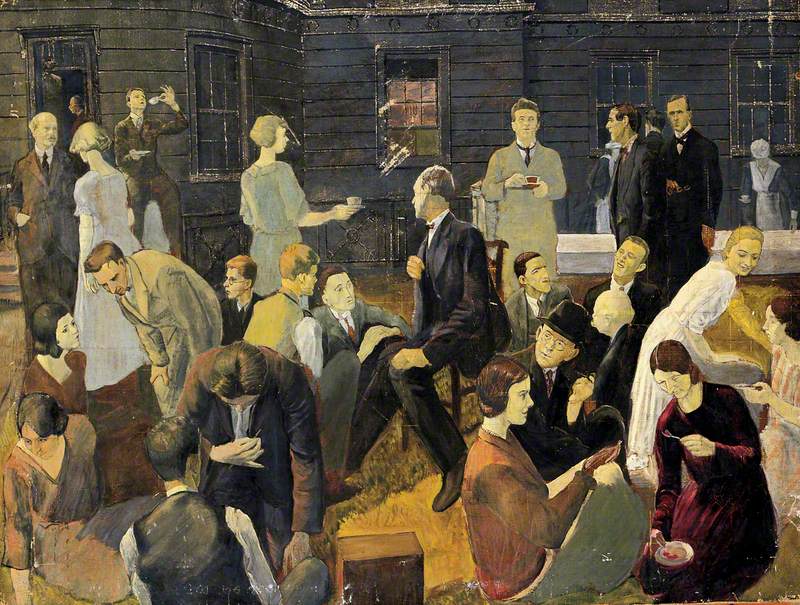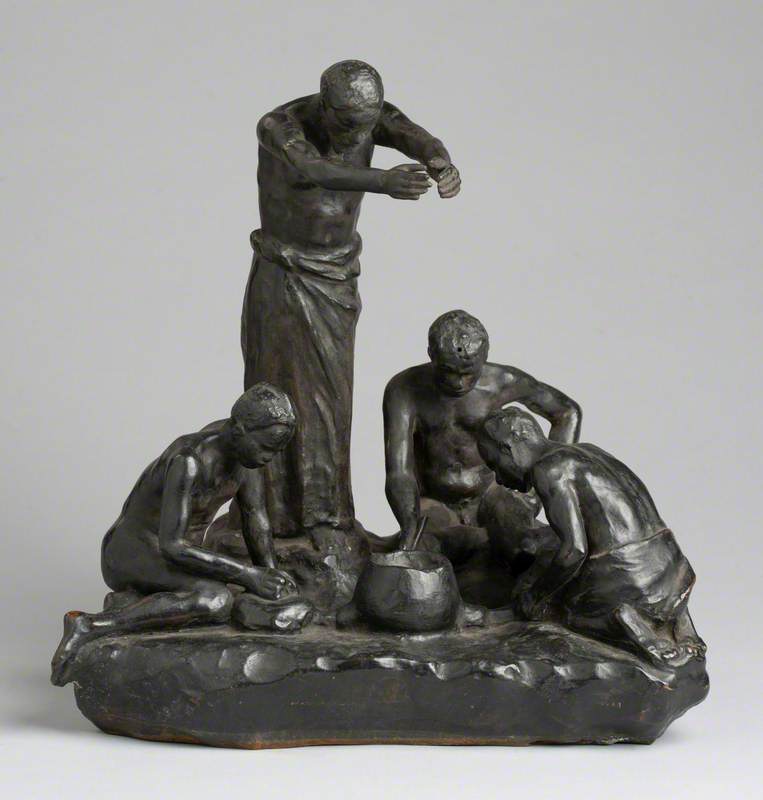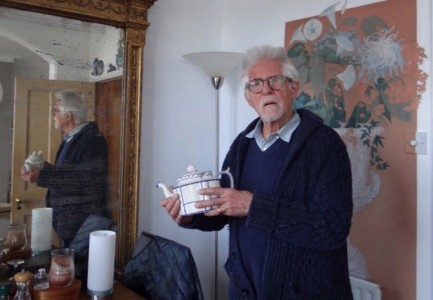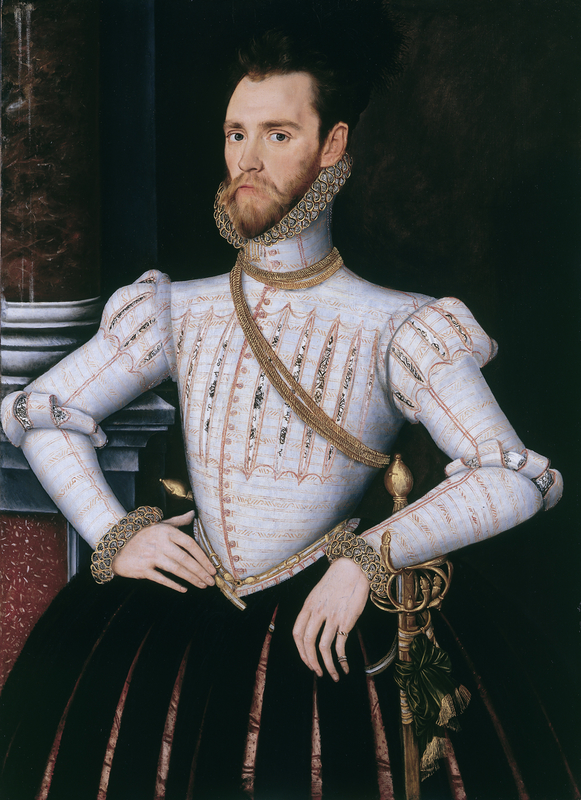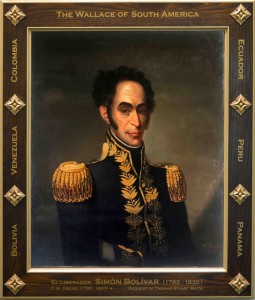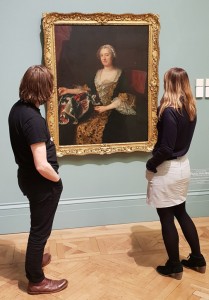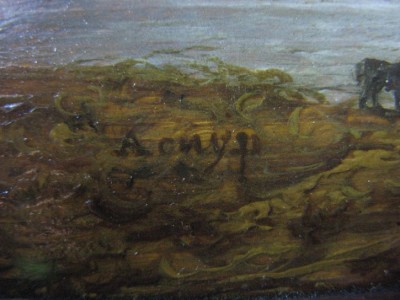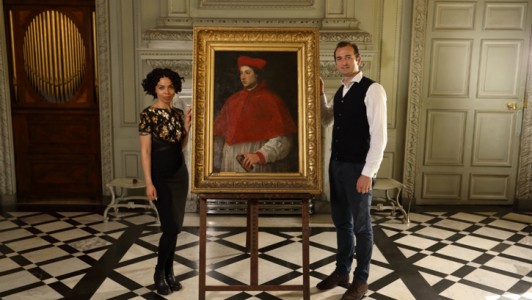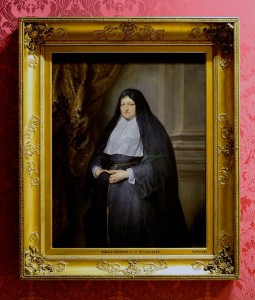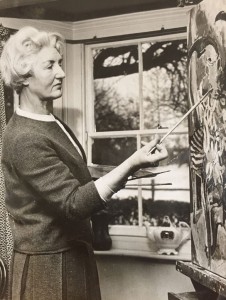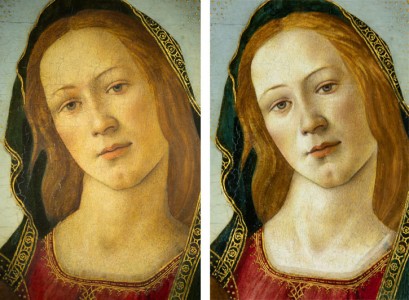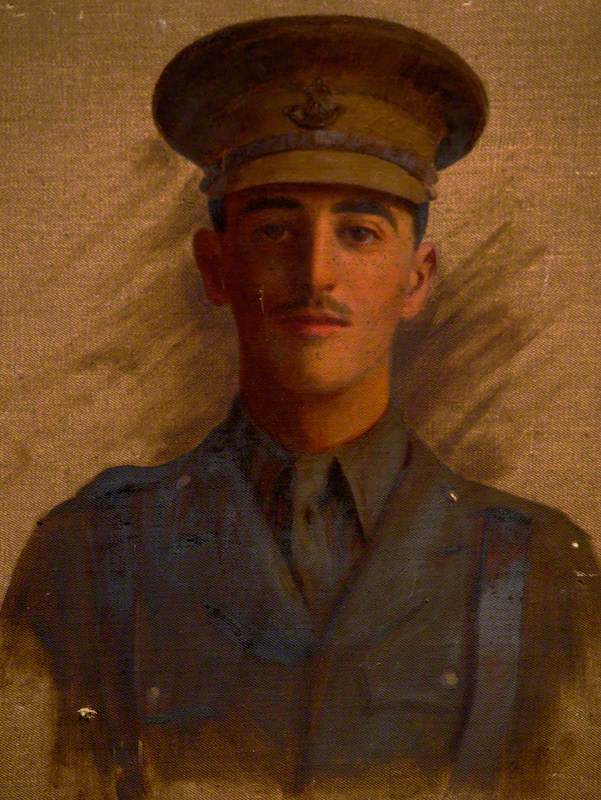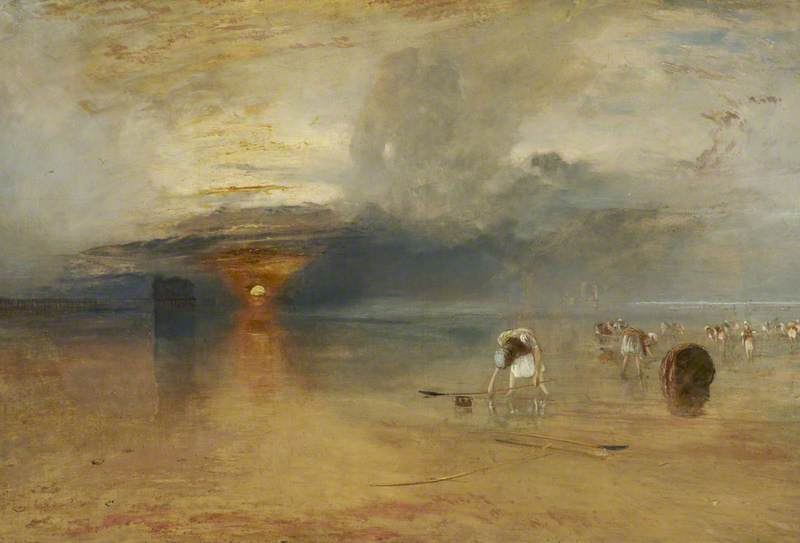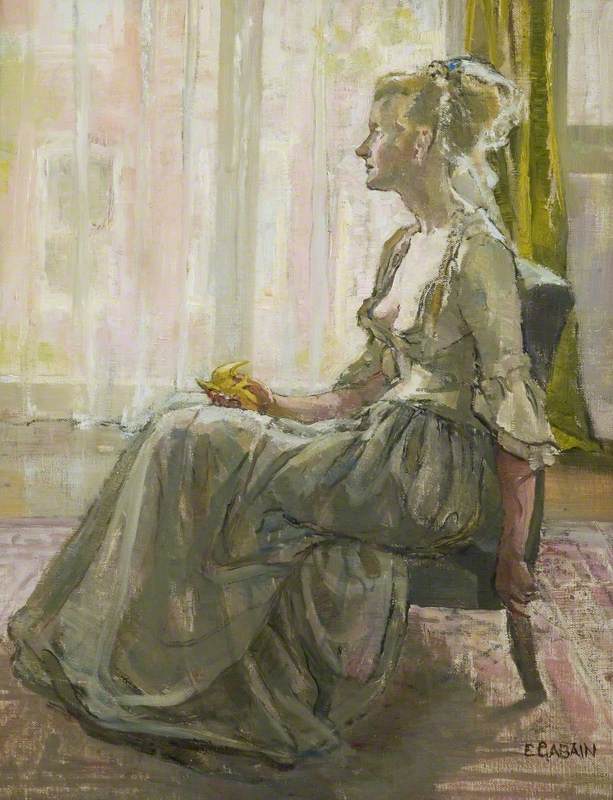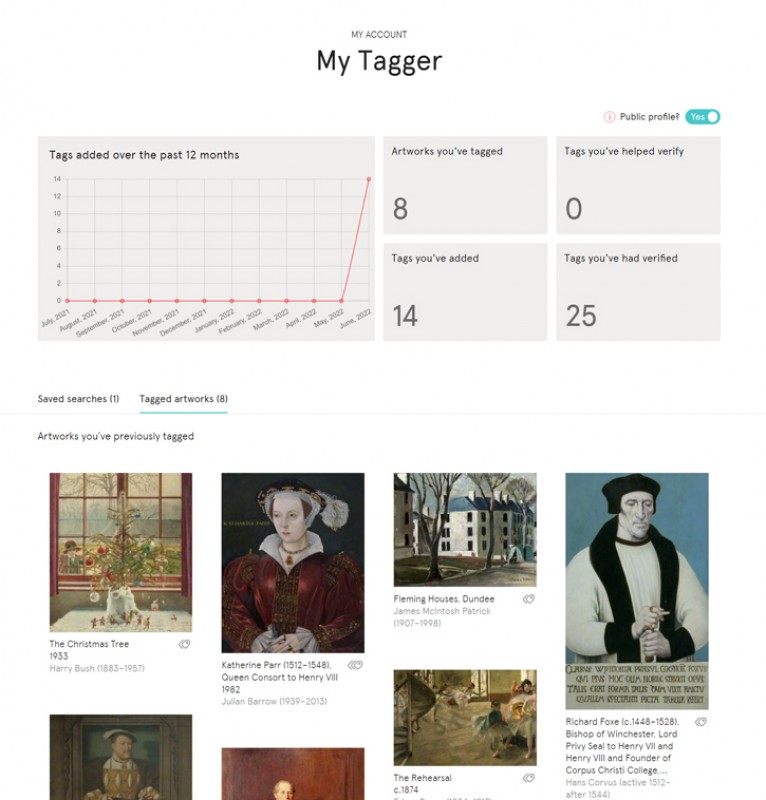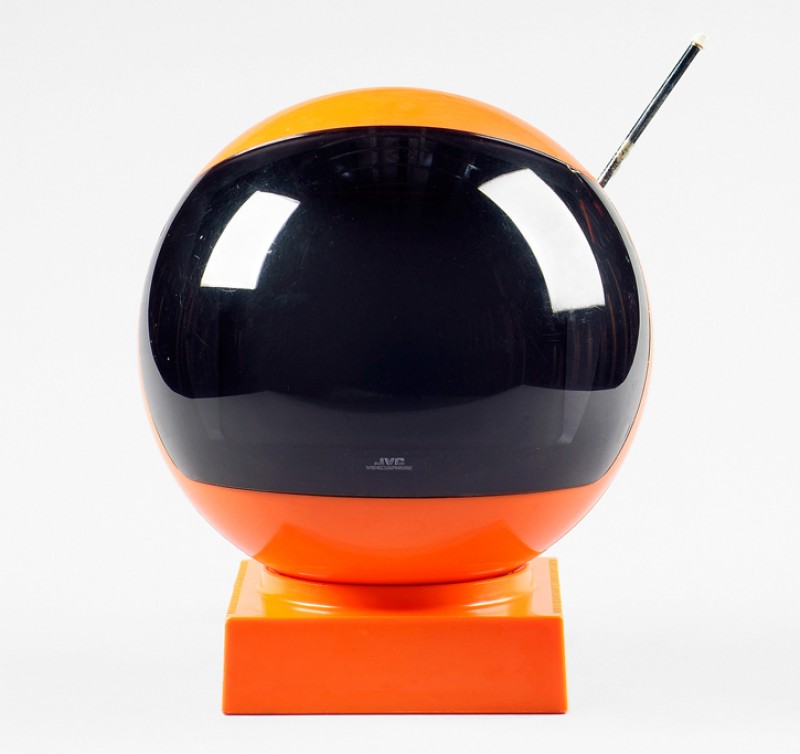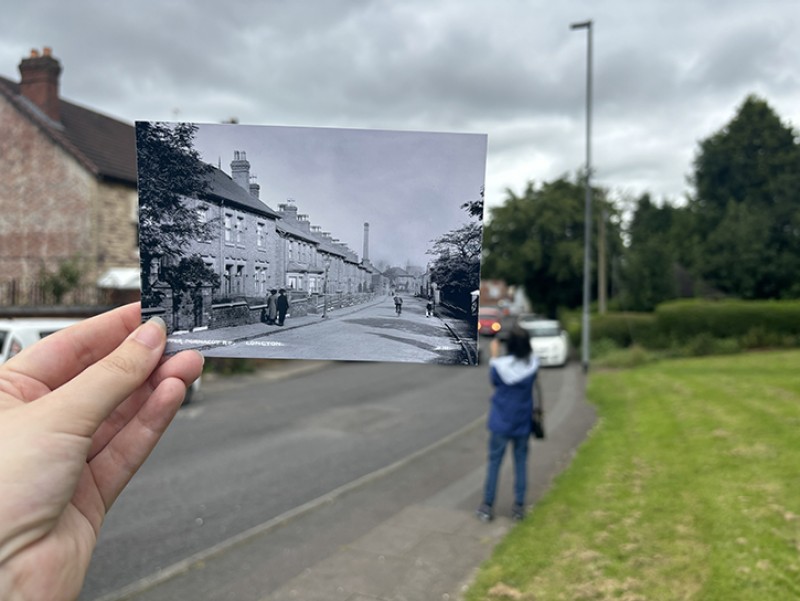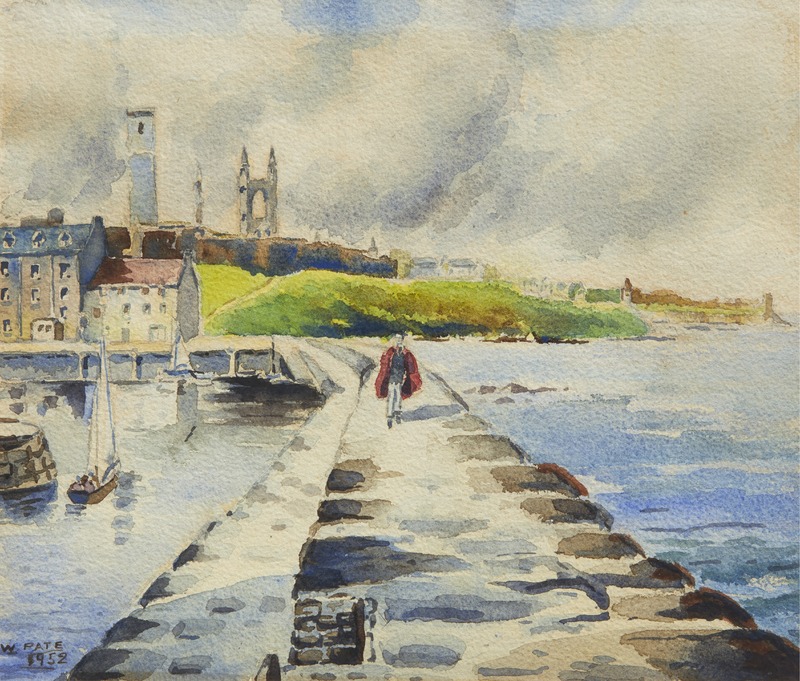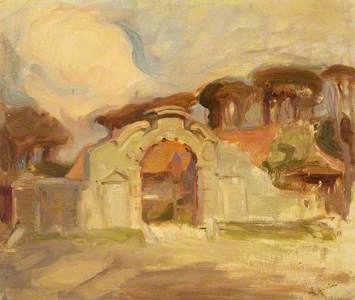How many artists are represented on Art UK?
As of January 2023, it's a whopping 53,651. How many of these artist pages have useful information? The number is smaller, but growing all the time. Many artists may be represented by a handful of works, or even just one. Many may only be identified by initials or surnames or a best guess.
Within that group, there are also over 3,000 works by 'British School' (essentially meaning an unknown British artist), and over 33,000 by 'unknown artist'.
Esther Inglis (1571–1624), Calligrapher and Miniaturist
1595
unknown artist 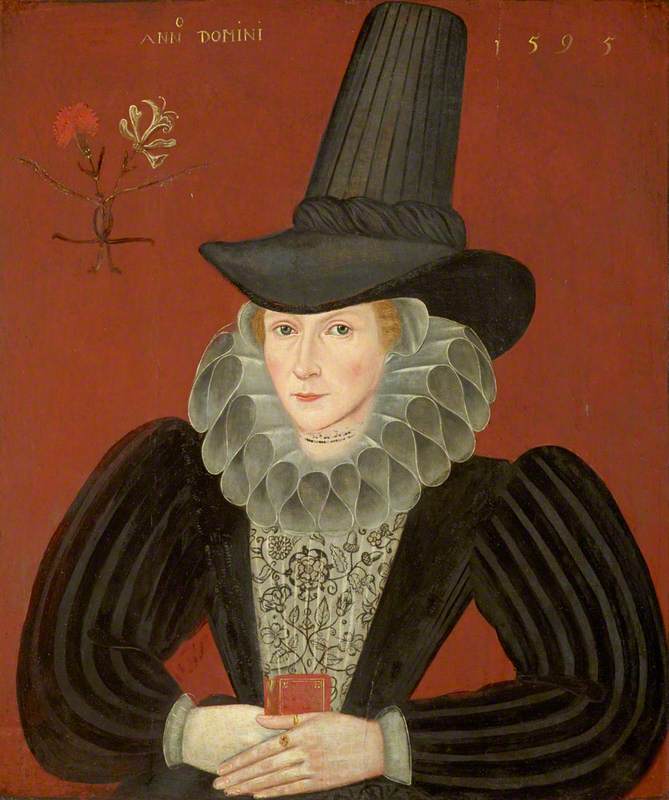
The problem comes from the truly massive undertaking that is Art UK – collecting together records from thousands of collections, made over hundreds of years by countless people. But we're also trying to transform our understanding of what is held in the UK's art collection.
Our artist pages draw information from a variety of sources. We are pleased to work with Oxford University Press on bringing in biographies from their various art books. We link to artists' own websites and sites like Wikipedia where appropriate in order to draw in any extra or updated information. Monet's artist page, for example, has his entry from The Oxford Dictionary of Art and Artists, but also a link to his Wikipedia page.
San Giorgio Maggiore by Twilight
1908
Claude Monet (1840–1926) 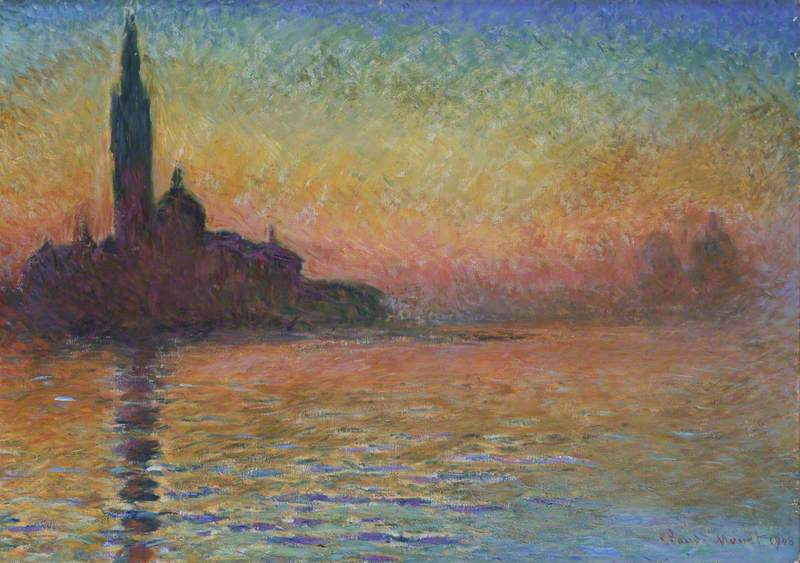
We have also recently added hundreds of entries from David Buckman's two-volume Artists in Britain Since 1945, and biographies from Liss Llewellyn's database, meaning that around 23% of our artists have some biographical information on the site directly. That figure grows to 30% if Wikipedia links are counted too. For example, muralist and painter Mary Adshead's primary biography is from Buckman's Artists in Britain Since 1945.
However, one of the main ways we're able to contribute to this information about artists is through Art Detective, our detective agency for any artwork where we can improve the data. That might be a small thing like a confirmation of an exhibition date, or a realisation that the work by 'J. Brown' in one collection is in fact the same 'John Brown' in another collection.
Frequently the artists who are investigated on Art Detective do not have biographies anywhere else on the internet. Thanks to the efforts of our volunteer Art Detectives, we build up the picture around an artist, sometimes from 'unknown artist' to a new entry on the site, and a full biography. These are then added to our artist pages so that the information is widely available.
Here are a few artists who now have biographies thanks to public discussions on Art Detective.
Betty Aaerens
First up it's Betty Aaerens... or should that be Rebecca Scheizer? Or Betty Kent? Or Betty Taub?
The sculptor in question was born and registered as Rebecca Scheizer in London's Mile End in 1904, and was the eldest child of Abraham Aarons, a Russian-Jewish 'Ladies-Taylor Cutter' and his Russian-Polish wife, Mary. She entered the Manchester Jews School in 1914 as 'Schreizer' – why the whole family was then using the name is unknown.
Rebecca next appears as the 'Betty Aaerens' who in 1932 exhibited two pieces at the Lancashire and Cheshire Artists' Exhibition at the Walker Art Gallery, Liverpool. In 1934, at the 75th Spring Exhibition of the Manchester Academy of Fine Arts, she showed Noel, a head-and-shoulders bust of a young man – probably a plaster version of the bronze version of the work that began the discussion.
'Noel' was Ernest Noel Barker (1902–1990). He too appears to have been from the Manchester Jewish community. Correspondence with his wife suggests that Betty shortly afterwards left Manchester for London, where she later married. The 1939 electoral register for Hackney shows a 'Betty Aarens' living at 10 Laura Place but the September 1939 National Register for the same address calls her 'Betty Kent' – this may have been the name under which she then worked as a Commercial Artist, her occupation in that record.
A subsequent amendment shows her married name was Taub and she had in fact already been living with Henry Taub in Hackney, in the electoral register for 1938. After they married, her maiden name was given under his entry in the register index as Rebecca 'Scheizer or Kent', and under hers as just 'Scheizer'.
While she continued to work both graphically and as a sculptor, subsequent traces are slight. In 1951, she was probably the Betty Taub who exhibited a painting or drawing entitled Spring at Kew at the Ben Uri Gallery in London. She died in London in 1994. Why she adopted the 'Aaerens' spelling of her father's surname is unknown but, as with 'Kent', it appears to have been a professional usage.
Confusingly, another sculptor called Betty Aaerens exhibited (in marble) at Liverpool's Walker Art Gallery in 1903 and also showed works at the Royal Academy in 1904, 1905 and 1907, but other than her RA submission address in Parson's Green, London, nothing else is yet known of her.
George Howell Baker
Sometimes an Art Detective discussion is pretty broad, such as when we asked: 'Can we find out more about the artist G. Howell Baker?'
The discussion resulted in a more detailed Wikipedia summary of the artist's life and work by Andy Mabbett.
George Howell Baker – a painter, illustrator, poet and art teacher – was born in Prestwich, Manchester, early in 1871. His father was George Baker, a lace merchant, and his Welsh mother was Mary Catherine (née Howell) of Bridgend, Glamorgan. George subsequently adopted 'Howell-Baker' as a working surname for artistic-signature reasons and wrote magazine pieces and poetry under the pseudonym 'G. H. Rekab' (Baker in reverse).
Though primarily a graphic artist and illustrator he also painted significant works in oil, did watercolours and some wood-carving, and was remembered as an inspiring art teacher. He exhibited at the Royal West of England Academy in Bristol between 1903 and 1916 and was elected an Associate of the RWA in 1910. He also exhibited in Swansea, Cardiff and Aberystwyth.
George's health was precarious and, despite his early artistic success, he suffered a nervous breakdown in 1917 and died aged 48 at Bridgend in 1919, survived by his mother, sister and a fiancée, Lillie Abbot. She subsequently moved to Cincinnati, where the Cincinnati Public Library holds an informative scrapbook of his graphic work and related notes.
The only oil painting by Baker in a UK public collection is Ewenny Priory, outside Bridgend, now in the National Museum of Wales.
The Glynn Vivian Gallery has eight prints, two drawings and a watercolour of Carrickfergus Castle by Baker – four of these were gifts from the artist to Swansea early in 1916.
Elizaveta Petrovna Cheremisinova
Sometimes discussions are about artists who were born and largely worked outside the UK.
Elizaveta Petrovna Cheremisinova (also known as Elisabeth Tcheremissinof) was a Russian sculptor, portrait medallist, and a skilled artist in decorative leatherwork, including bookbinding. She also occasionally painted portraits and other subjects. Born into an aristocratic family in (or near) St Petersburg, in February 1877, her Russian Orthodox baptism is recorded in the church of the Peterhof Palace. She completed her early education at the Smolny Institute for Noble Maidens, the leading St Petersburg school for aristocratic girls, in 1895.
Elizaveta was the youngest child of Pyotr Nikolai Cheremisinov, a St Petersburg jurist and Privy Councillor to Tsar Nicholas II. Her mother was Anna Vasilievna Trewheller, Pyotr's first wife. Her maternal great-grandfather, John Trewheller, was from Penryn in Cornwall, and her grandfather, Frederick William Trewheller, was born at Gillingham, Kent, but trained as a civil engineer in Russia, and settled in St Petersburg from 1833. He was naturalised as Vasily Ivanovich Truveller in 1856 – the house he built for himself in St Petersburg is still called 'Truveller's House'.
After leaving school Elizaveta travelled to Egypt, Jerusalem, Italy, France and Switzerland, among other places. Beginning her artistic career with leatherwork, by 1905/1906 she had turned to sculpture, studying for three years in Vienna, then two in Paris and possibly also in Germany. She returned to St Petersburg around 1912 and began to use studio space in the residence of Count Ichiro Motono, Japanese ambassador to Russia and a close friend of her father.
In November 1916 Motono was appointed Japanese Foreign minister and Cheremisinova followed him to work in Tokyo. She had arrived by early January 1917, staying at the old Imperial Hotel. Frank Lloyd Wright, who also had a working room in the old hotel while he built the new Imperial (1917–1923), briefly mentions her in his autobiography as 'Princess Tcheremissinoff' and one of the 'talented' and 'charming Russians' he met in Japan.
Unfortunately, Count Motono died in September 1918, but Cheremisinova remained in Tokyo for several more years. The last trace of her in Japan was in January 1922 when she shared an exhibition with a Czech painter in Tokyo. Her subsequent movements until 1937 are unknown but she perhaps returned to Austria, and then submitted RA entries in 1937 from an address in London. She showed sculptures at the Royal Society of Miniature Painters in 1937 and 1938, and had a solo exhibition at the Renaissance Galleries at 9 Lower Regent Street in May 1938.
Her last RA exhibit, also in 1938 and illustrated in the catalogue, was an impressive lead bust of the former Headmaster of Winchester College, Montague John Rendall (1862–1950).
Montague John Rendall (1862–1950)
c.1938
Elizaveta Petrovna Cheremisinova (Elisabeth Tcheremissinof) (1877–1963) 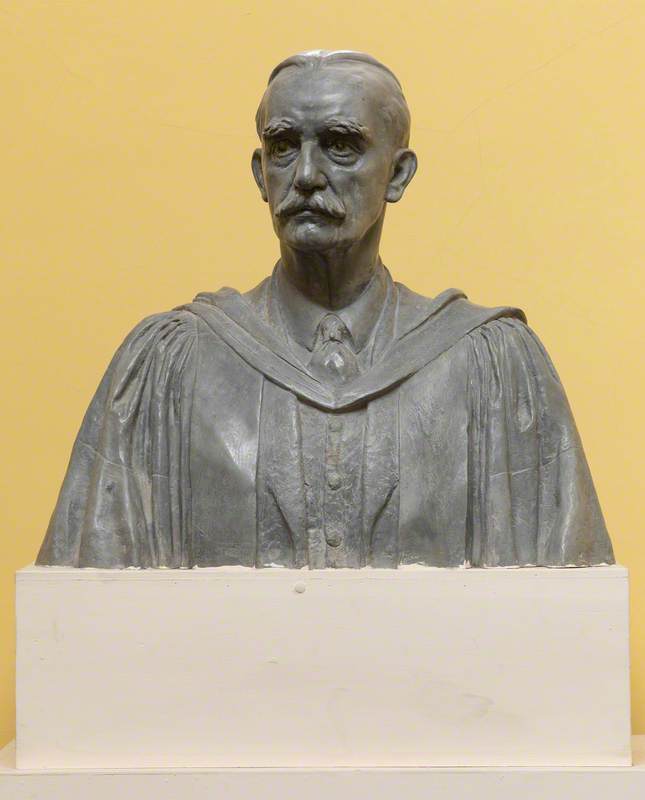
Rendall explained its genesis and her circumstances in a letter to the Warden of the College in January 1939: 'I am told that a 'lead' bust of me, the work of a very talented and sincere Russian lady, Miss Tcheremisinoff, which was mentioned with strong approval by the press & received an excellent place in last year's Academy, has been accepted by the Warden & Fellows... May I say that the making of the bust did not spring from any suggestion of mine. I was reluctantly induced to sit to Miss Tcheremissinoff at Madam Wockoff's repeated request. Madame Wockoff has a son in College... The two ladies have lately shared a studio in Kensington. They were & are sorely in need of financial help: that was why I came across them.'
Rendall had a notable interest in the arts and College records say he presented the bust but also that it was paid for by a number of subscribing donors, probably former pupils.
Cheremisinova remained in London and died at 9 Porchester Square on 8th February 1963. She was a talented artist from a privileged family, whose career opportunities and hard work appear to have fallen casualty to war and revolution. Though in England by 1937, and with family and other Russian connections there, the dislocations of exile and renewed world war in her 50s probably prevented her from achieving the wider name and success she deserved.
George Gregor Delotz
Although our next artist was born in Scotland, his family had connections to Napoleonic France.
George Gregor Delotz was a painter of London scenes and fruit and flower compositions who exhibited at the Royal Academy, British Institution and Society of British Artists from 1848 to 1864. He was born in Jedburgh, Roxburghshire, around 1814/1815. In 1924 Campbell Dodgson of the British Museum purchased 92 etchings and about a dozen drawings by Delotz for the Museum from his family; another 18 went to the V&A about the same time. It was one of these prints that showed a monogram which matched the one on the bottom right of this painting.
Fruit on a Salver on a Marble Ledge
George Gregor Delotz (1814/1815–1879) 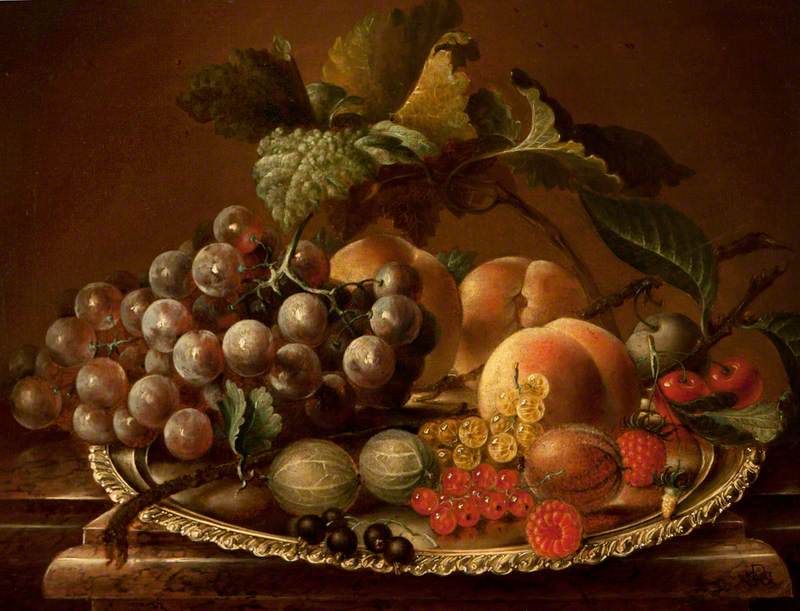
Delotz's French father was Grégoire Delotz, a soldier in the French army, who was captured at the Battle of Bailén in 1808. He was transferred to British custody and sent to England, where he was held at Portsmouth, Crediton, and eventually Jedburgh in the Scottish Borders. His son, the artist George Gregor, was probably illegitimate and born after his father was repatriated to France in 1814. Delotz senior continued his army career, married, and had other children. It is not known if he had any contact with or sent any support to his half-British infant son.
George Gregor Delotz was a decorative house painter by profession. He came to London in early life, married there and had eleven children. As a fine-art painter and printmaker Delotz appears to have been self-taught. His daughters said he did it primarily for recreation and 'went on students' days to the National Gallery, where he copied Titian, Rembrandt and Turner.'
Sadly, and shockingly, in Greenwich Park in November 1879, Delotz shot and killed himself. No explanation was offered at the Greenwich coroner's inquest and the jury's verdict was suicide owing to 'temporary insanity'. His age at death was officially registered as 64.
Adrianus Johannes Jansen
Sometimes, an artist's identity will become confused with multiple names. This is true of our next artist, Adrianus Johannes ('Arie'/'Harry') Jansen.
We now know that Jansen was a Dutch ship-portrait painter who was born in Gouda in 1863. He moved to Rotterdam by 1884, where his father and stepmother joined him. They apparently did so to help him start running a café and bar on the waterfront. The Westerkade café, sometimes referred to as Café Jansen, was almost adjacent to the Rotterdam offices of the British Great Eastern Railway Company, whose North Sea ferries docked opposite on the quay.
The Jansens continued to live there and run it until around 1902. They appear to have had a series of maidservants helping domestically and in the café, including an Aplonia Zevenbergen. By 1906, Jansen had left his wife and daughter and moved to Antwerp with Aplonia although, as Roman Catholics, Jansen never divorced. Jansen's wife and daughter remained in Rotterdam; he and Aplonia also returned there at the start of the First World War, only returning to Antwerp in 1925.
As an artist, Jansen appears to have begun as a self-taught amateur. Probably from about 1890, when already running the café, he began painting ship-portraits of the Great Eastern Railway Company ferries and other vessels and found a market for them among the seamen and other shipping people. He likely lived largely as a professional ship-portraitist from about 1903 and may have been active for as long as about 50 years overall. His surviving ship-portraits are widely distributed.
He generally painted in oils and usually signed 'A. J. Jansen', including Rotterdam or Antwerp and a date, but appears to have been known to British clients as 'Harry', leading to his first initial sometimes being interpreted as 'H'. This was an anglicisation of 'Arie', the common Dutch abbreviation of Adrianus. Only one picture signed 'Harry Jansen' is so far known, dated 1913 – this is of the Titanic, with an iceberg close behind, now in the National Maritime Museum, Greenwich.
Jansen's wife Hendrika died in Rotterdam in 1928, and Aplonia and Jansen finally married in Antwerp in 1942. Jansen's Belgian residence file suggests they probably had a fairly precarious existence for at least the last 20 years of his life. He died aged 80 in Antwerp on 31st December 1943.
Jansen should not be confused with the Danish-born but German-resident marine painter Alfred Jensen (1859–1935), sometimes accidentally called Jansen, who had academic training and became a professor at the Hamburg School of Applied Arts. Several of the works now attributed to Jansen on Art UK were previously attributed to different artists, but now we know they are by the same man.
Seoirse MacAntsionnaigh
Another name that foxed art historians for a while was that of Seoirse MacAntsionnaigh. This painter was born George Howard Fox at Brewood, Cannock, Staffordshire, in 1902 to an Irish father and English mother. Tragically, his mother was killed in a train accident in 1904. According to the family, George and his siblings were then brought up by their father 'alongside a notorious housekeeper called Mrs Onions'.
Nothing further is known of Fox until he joined the Slade School of Art, apparently in 1923, except that he had by then acquired strong Irish Nationalist leanings and, about the age of 17 changed his name to 'Seóirse MacAntisionnaigh' (literally: George, son of a fox). This is the '-isi-' spelling by which he was registered at the Slade but does not appear in other records.
As 'MacAntisionnaigh', he was a notable painting student at the Slade from 1923 to 1927. He won First Prize (Equal) in 'Head Painting' with Rex Whistler in 1924, the Slade only retaining his entry, Portrait of a Girl.
In the same year he also won Second Prize (Equal) with five others in 'Figure Painting', with William Dring and Whistler sharing First Prize; also in 1924, in the 'Summer Composition' category – then titled 'Figure Composition' – he and five others including Whistler gained Second Prize (Equal), no First being awarded. His entry for this was The Slade Tea Party, showing a group of students and staff, centring round the seated figure of Professor Henry Tonks, in the quadrangle in front of the Wilkins Building, University College London.
After leaving the Slade, Macantsionnaigh was for some time assistant to Gerald Kelly, who had been one of his teachers there – he appears to have helped Kelly with backgrounds to portraits and they remained friends thereafter.
Sometime in the early 1930s, he began a relationship with Marie Reeta Patricia Brown (née Blount), known as 'Marita'. She was married but soon divorced, and in 1935 she married Macantsionnaigh (who used the name George Fox on this occasion) at the St Helier registry office, Jersey. His profession was then stated as 'carpenter'. Their son and daughter were born in St Helier but they had returned to England by 1939 and were living near Salisbury.
Macantsionnaigh began teaching art and art history at Bishop Wordsworth's School in Salisbury, probably until shortly after the Second World War. From 1947 to 1949 he went to Baghdad to do the same before returning to London where he became art master at the William Morris Technical School in Walthamstow, until his retirement in 1973. The Macantsionnaighs' marriage seems to have ended in separation, at least by 1955 when he is living alone in Highgate. He later moved to a retirement flat in Taunton, where he died aged 95 in 1997.
Helen Georgina Tabor
Again, we were after confirmation that initials and full names were by the same person when we asked: 'Can we prove H. G. Tabor and Helen Tabor are the same artist?'
Helen Tabor (née Leipner) was born in Clifton, Bristol, as the youngest child of Professor (Frederick Julius) Adolph Leipner and his wife Henrietta – her parents were both native Germans. Adolph, who taught German and natural sciences at (then) University College, Bristol, was a naturalised British citizen but born in Saxony; Henrietta was born in Dresden.
In 1894 Helen married George Hugo Tabor, an artist and art teacher at St Mary's, Tyndall's Park, Clifton, and by 1901 they were living in Twickenham. Helen's husband was by then on the staff of Teddington School of Art in Church Road, where she was also a pupil from about 1902 to 1905. Her posthumous oil portrait of George Frederick Schacht (1823–1896), Vice President of the Pharmaceutical Society, which was commissioned in 1897, shows she must have had some earlier training – and prior reputation – by that time.
George Frederick Schacht (1823–1896), Vice-President of the Pharmaceutical Society (1879–1882)
1897
Helen Georgina Tabor (1864–1933) 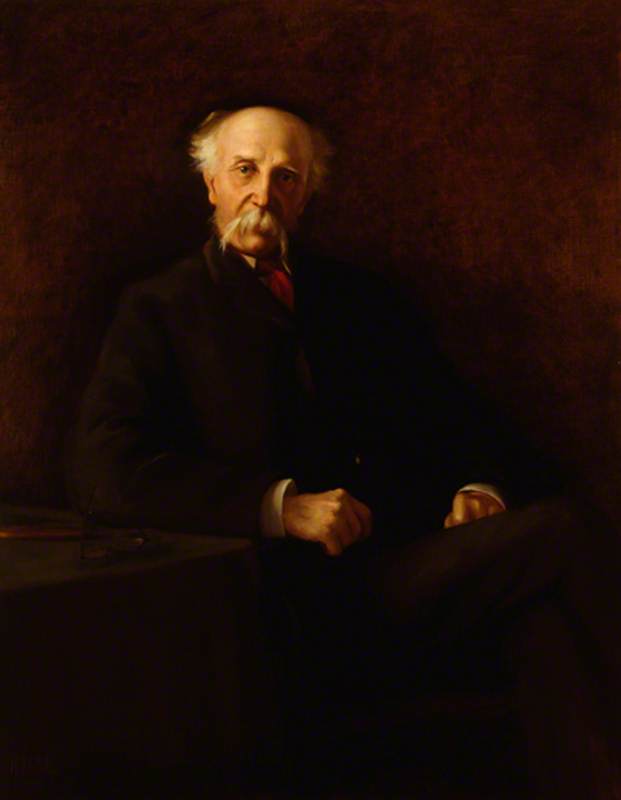
Press reports of Teddington Art School exhibitions from 1902 to 1907 in the Surrey Comet make complimentary comments on her work as a draughtswoman and painter in both figure and landscape subjects. In September 1905, the Thames Valley Art Club was formed with Hugo as its honorary secretary, and Helen's entries in its first spring exhibition at Teddington in 1906 were also praised by the Comet.
The three paintings listed on Art UK demonstrate a marked difference between her portraits and her landscape style. Though competent and with strong sitter presence, the former are conventional.
John Charles Buckmaster (1823–1908), JP
before 1907
Helen Georgina Tabor (1864–1933) 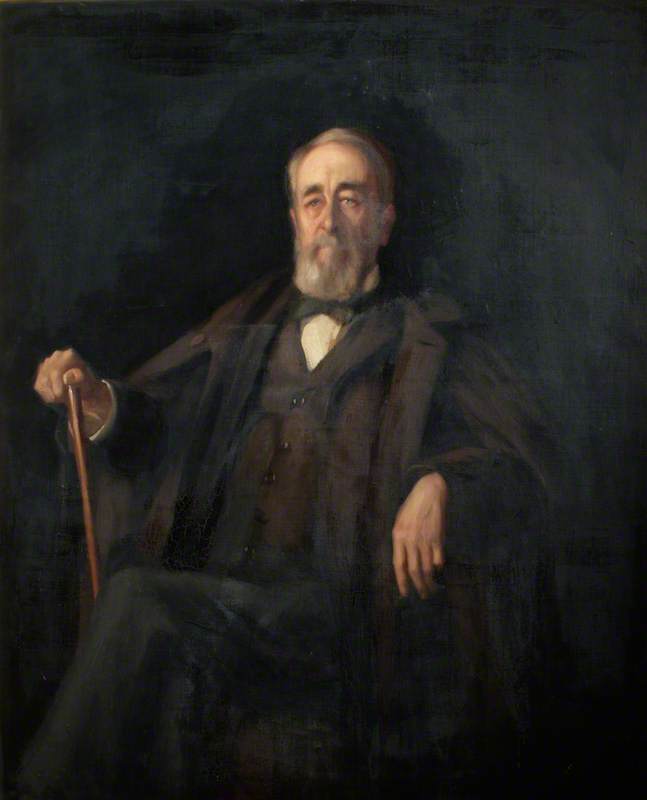
The single landscape, in the collection of the Royal West of England Academy, is of a large, low-profile house backed by idiosyncratically painted pine trees and all set behind an unusual monumental stone gateway. It is in a more colourfully fluent and modern style.
A Stone Gateway with a House and Trees Beyond
1915 or before
Helen Georgina Tabor (1864–1933) 
While a very small sample, the difference suggests that her apparent return to training after her son was born in 1901 may have been to redevelop her manner, at least for non-portrait work, perhaps encouraged by her husband. In the 1911 census she is listed as 'artist', suggesting she continued to paint and exhibit. At her death in 1933, Helen Tabor was widowed but still living in the same house.
Arthur Puyt
Finally, sometimes signatures are missed – they're not always in the most obvious place or very decipherable. The one on this small sculpture in Aberdeen Art Gallery led us to a Belgian sculptor, Arthur Puyt.
Born in 1873, Puyt was originally from Bruges. He trained at the Académie des Beaux-arts in Brussels and then settled in Forest, a municipality in the Brussels-Capital region of Belgium. Puyt specialised in small sculptures including animals and figure groups, and also graves and memorials in the Brussels region. He also did three First World War memorials and worked as a medallist, sometimes collaborating with other artists. Variations of inscribed signatures on his bronzes include 'A Puyt', 'At. Puyt' and 'AP' on smaller pieces.
The sculpture on Art UK is a cast of a small figure group called Fondérie de Cuivre au Katanga (A Copper Foundry, Katanga) cast in 1912 and purchased in that year by the Département des Colonies for the Musée de Tervueren (the Royal Museum for Central Africa).
It was obtained by Sir Robert Williams (1860–1938) who was largely responsible for discovering the copper deposits in Katanga. He bequeathed it to Aberdeen Art Gallery and Museum where it was formally accessioned in 1946. It is the only item by Puyt in a UK public collection that we know of.
If you want to know more, there's a full list of artist biographies enhanced by Art Detective discussions, which is updated all the time. As a reminder, anyone can take part in Art Detective. It's a free online platform, and it's easy to use. You never know what might be hiding in plain sight in your local collection.
Andrew Shore, Head of Content at Art UK
The biographical entries in this piece are largely the work of Pieter van der Merwe, compiled from information submitted by many Art Detective contributors, edited by Art Detective Manager Dr Marion Richards.
